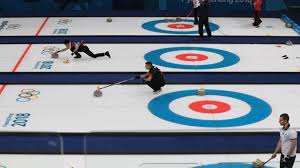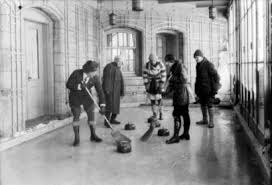
With its weird brooms and constant sweeping on ice, curling may seem like a bizarre and unusual sport. But if you know the basics of the winter sport, you can understand the reasons why so many people around the world are attracted by its strategies and the endurance required to win.
Curling is a team sport that is played by two teams featuring four players on a rectangular sheet of ice. Curling also has a nickname, “The Roaring Game”, originating from the rumbling sound that the 19.96kg granite stones make when they travel across the ice.
Scottish origins
Curling is one of the oldest team sports in the world. This sport originated in the 16th century in Scotland, where games and sports were played in winter on frozen ponds and lochs. The earliest-known curling stones came from the Stirling and Perth regions and date from 1511. Stones with handles were introduced in the 1600s.

Key developments
The world’s first curling teams appeared in Scotland. Formed in 1838, the Grand Caledonian Curling Club, renamed the Royal Caledonian Curling Club in 1843, is responsible for formulating the first official rules of curling. The 20th-century witnessed the key developments of the sport, including the standardization of the stone, the development of the slide delivery, and the use of indoor, refrigerated ice facilities.
Olympic history
Men’s curling was featured in the Olympic in 1924 at the first Olympic Winter Games in Chamonix. Then it was dropped and later re-introduced as a demonstration sport in Lake Placid in 1932.
Between 1936 and 1992, the sport was staged at the Olympic Games as a demonstration sport: in Garmisch-Partenkirchen in 1936 and Innsbruck in 1964, under the name “Eisschiessen” in German language; and with both men’s and women’s events in 1988 in Calgary and in 1992 in Albertville.
Cusling officially joined the Olympic programme in Nagano in 1998 with both men’s and women’s competitions.